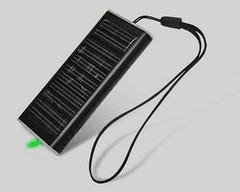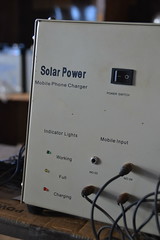So you have a nice new shiny smartphone to take on your next camping trip. It’s awesome because it does pretty much everything you need all in one package.
But WAIT!
What if your camping event doesn’t have household power available? Can your phone last the duration of the camping event? Is there a cell tower close enough? How do you manage your phone and power usage?
The easiest approach to keeping a phone charged for a weekend camping event is to
turn it off. Period. No battery drain. No calls. No Hassle. And, when you get ready to leave you can turn it on with confidence. Or, you can turn on the phone to take pictures, get text messages, or get voicemail. Then turn it off. But what If you are on call, have a family member who needs to be able to contact you, or have some urgent business email that you have to respond to when it arrives?
Most smart phones will provide 24 hours of standby time – assuming that the cellular provider services the camping area with a
digital service like GSM, 3G or 4G. After 24 hours you’re out of luck.
What do you do when there’s no electric outlet to recharge your phone? One answer can be a battery and inverter to drive a wall charger. Or, you could use a jumpstart battery and a car charger (it won’t charge as completely as a wall charger and it’s slower). Some smartphones permit you to change battery packs (but not most).
USB battery packs that can charge USB compliant devices are inexpensive and easily purchased at many big box stores. Some also include a low power 120V inverter. I bought a USB charger pack for less than $50 (for a battery/inverter combination). It fully charged a mostly discharged iPad Mini in a few hours with left over charge for other uses.
Portable solar chargers are also available for laptops, cell phones and other portable devices.
Eirny’s comment: Another issue, which most folks have never considered, is the effect of cold on your electronics’ battery. When I do cold weather nature photography I carry a spare battery or two in the inside pocket of my parka. My body heat keeps the batteries warm so that they don’t discharge. I had never considered this issue for my cell phone until a cold camping event this past spring. The temperatures were down in the upper thirties at night. I would turn off my cell phone at night and find it almost completely discharged in the morning when I turned it back on. It took me a couple of days to realize what was happening. I was not about to sleep with my cell phone on me, so I was just prepared to charge my phone every morning when I got up. My husband’s phone, which is a generation newer than mine, was NOT as susceptible to this problem as mine was.
For smaller power needs, there are a large number of alternatives. Pick one and go, but try it at home first!







 Car solar charger for your PC Laptop & Cell phone
Car solar charger for your PC Laptop & Cell phone